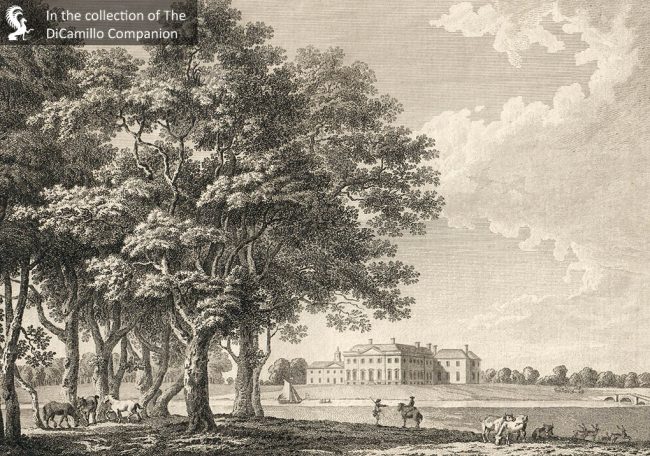
A 1778 engraving of the Georgian house from "The Copper Plate Magazine"
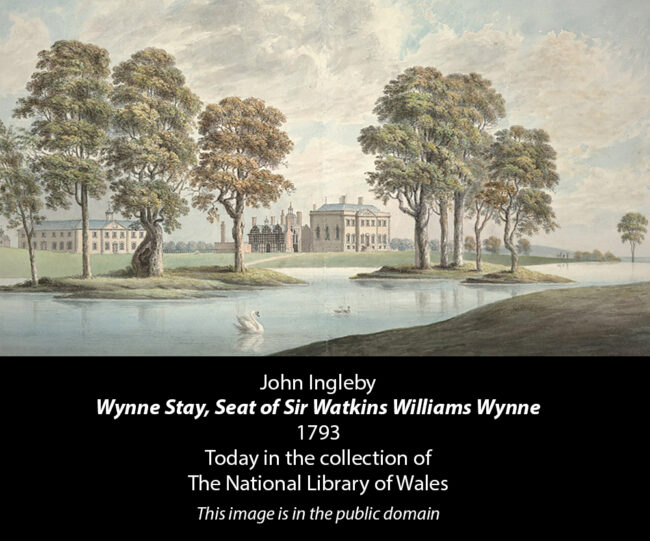
A late 18th century watercolor of the Georgian House, with the Stables to the left.
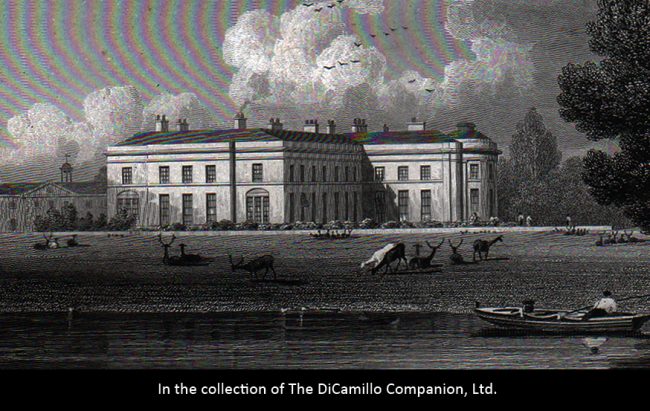
An 1829 engraving of the Georgian House from "Neale's Views of Seats"
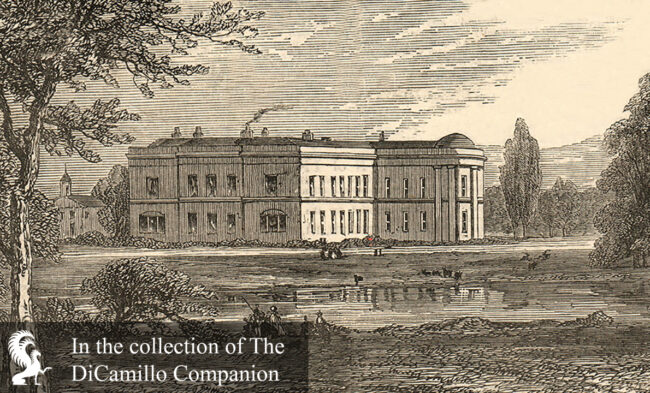
The Georgian House from an 1858 edition of "The Illustrated London News"
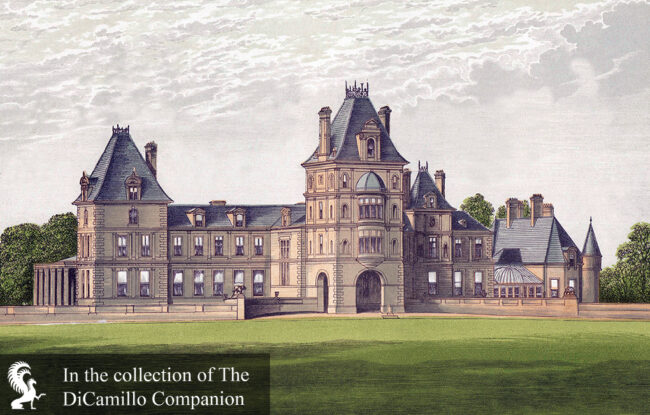
The Victorian French chateau style house from a circa 1875 lithograph from "Morris's Views of Seats"
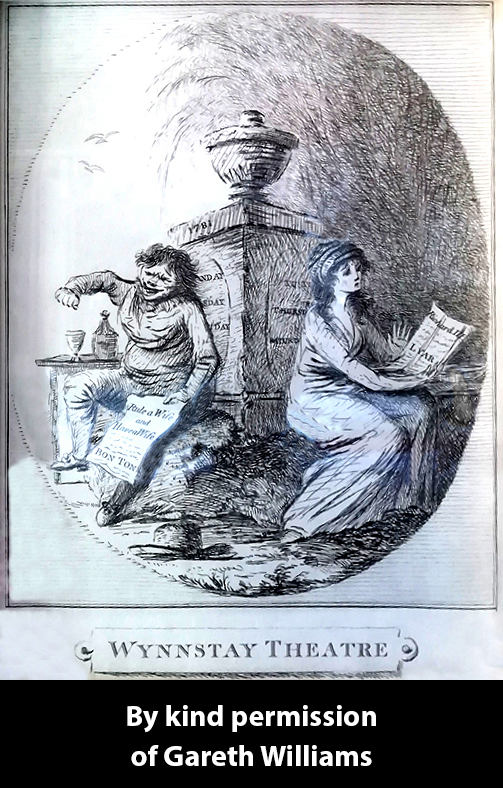
A 1780s ticket from the private theater at Wynnstay
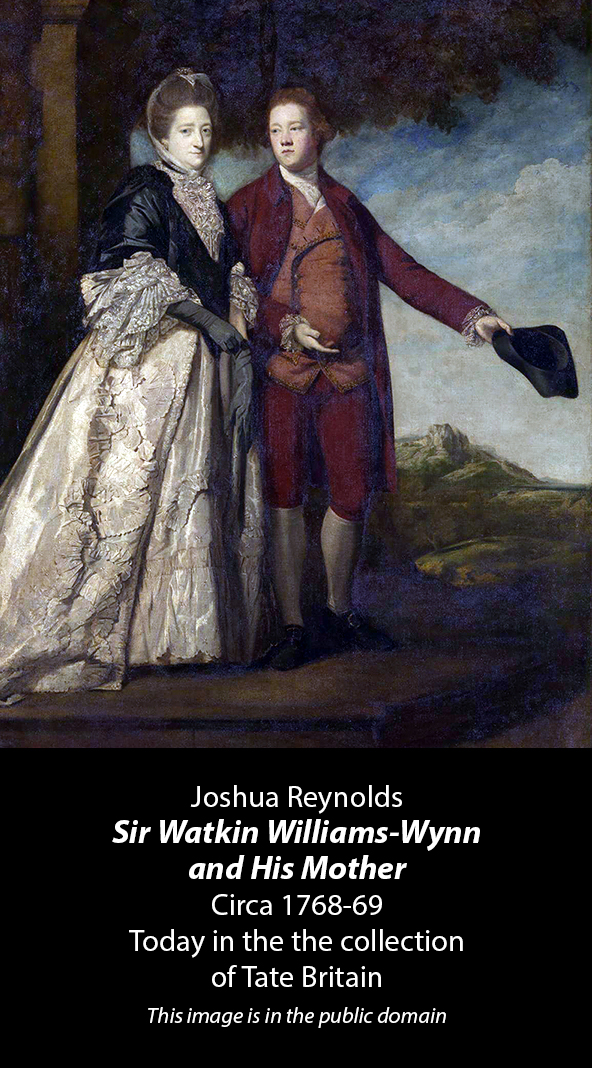
House & Family History: Sir Watkin Williams-Wynn, 4th Bt., was a Welsh patriot (he was very involved in societies for the revival and promotion of Celtic traditions) and one of the most generous British patrons of art in the late 18th century. He supported a wide variety of artists, engaging Paul Sandy to accompany him on a sketching tour of North Wales, hiring Joshua Reynolds to paint portraits of his family, and commissioning fellow Welshman Richard Wilson to paint scenes of an idyllic rural Wales. Sir Watkin was also a passionate supporter of the theater, which is one of the reasons why amateur theatricals were a big thing at Wynnstay (see “Images” section for a 1780s Wynnstay theater ticket). The 4th Baronet was such a lover of music that he employed a family harpist at Wynnstay, the famous John Parry, a blind musician greatly admired by Handel, today considered the finest Welsh musician of the 18th century. Such was Parry's influence that the triple harp that he played was later adopted as the national instrument of Wales. The National Museum Cardiff has, in its collection, a circa 1770 painting of John Parry by his son, William. In the early 19th century Sir Watkin Williams-Wynn, the 5th Baronet, was one of the wealthiest men in Britain (he owned over 150,000 acres). It was the 5th Baronet who hosted the young Princess Victoria (later Queen Victoria) and her mother, the Duchess of Kent, for a stay at Wynnstay in the early 19th century. A severe fire 1858 resulted in the Georgian Wynnstay being rebuilt in a strikingly different manner—the Henri III French chateau style, an unusual choice for a British house, and one especially rare for Wales. The house was rebuilt in a gray-green stone for Sir Watkin Williams-Wynn, 6th Bt., who engaged the London architect Benjamin Ferrey for the design. In 1950 the Williams-Wynn family sold the house to Lindisfarne College, who operated a private school here until their 1994 bankruptcy. In 2000 Wynnstay was converted into flats and several private houses.
Collections: In the late 18th and early 19th centuries Wynnstay was a true treasure house, with an outstanding collection of family portraits, silver, and furniture. Some of the best remnants of the collection are today displayed in a gallery at the National Museum Cardiff dedicated to Sir Watkin Williams-Wynn, 4th Bt., and his collecting. An extravagant 1768-69 vermeil toilet service made in London by Thomas Heming remained in the Williams-Wynn family until 1964, when it was purchased by the National Museum. The museum also owns a grand Batoni portrait commissioned by the 4th Baronet in 1768 in Rome at the age of 19 during his Grand Tour. The painting "Sir Watkin Williams-Wynn, Thomas Apperley and Captain Edward Hamilton" shows Sir Watkin (standing on the left with a drawing he made of a Raphael fresco in the Vatican in his hand) and two of his art-loving traveling companions. It took Batoni four years to complete the canvas, which many scholars today consider to be his masterpiece. When the Williams-Wynn family sold the painting to the National Museum in 1947, Batoni's reputation had fallen so far that it changed hands for the astonishingly small sum of £230. Sir Watkin engaged Joshua Reynolds to paint four full-length portraits of members of his family, including the circa 1778 "Lady Charlotte Williams-Wynn and Her Three Eldest Children," which is today in the collection of the National Museum, and the circa 1768-69 canvas of the 4th Baronet and his mother (see "Images" section) that is today in the collection of Tate Britain. In 1774 the 4th Baronet took delivery of a Neoclassical style chamber organ that he had commissioned for the Music Room of his London home, Wynn House, at 20 St. James’s Square. The organ, whose case was designed by Robert Adam and made by the London cabinetmaker Robert Ansell, was manufactured by John Snetzler in 1774. The organ's case features a central medallion with a profile of Handel, Sir Watkin's favorite composer, surrounded by two draped female figures: on the left Terpsichore, the muse of dancing and song, who holds a lyre, and, on the right, Euterpe, the muse of music, who has a musical pipe, or horn, in her hand. The organ was reinstalled in 1863 at Wynnstay, where it remained until it was purchased in 1995 by the National Museum Cardiff. The museum restored the organ and installed it in one of their galleries, where it can be heard as part of a program of regular public concerts. Peter Paul Rubens's "Forest at Dawn with a Deer Hunt" and 36 pieces from a silver-gilt dinner service, dated 1773-74 and designed by Robert Adam for the 4th Baronet, previously at Wynnstay, were sold and became part of the collection at Llangedwyn, from where they were subsequently sold.
Garden & Outbuildings: The fine 18th century stableblock is extant.
Architect: Lancelot Brown
Date: 1774-83Architect: Charles Robert Cockerell
Date: 1827-28Architect: Benjamin Ferrey
Date: 1858-61Architect: Smith Family
Date: 1736-38Architect: Benjamin Gummow
Date: Early 19th centuryJohn Bernard (J.B.) Burke, published under the title of A Visitation of the Seats and Arms of the Noblemen and Gentlemen of Great Britain and Ireland, among other titles: Vol. II, p. 160, 1853.
John Preston (J.P.) Neale, published under the title of Views of the Seats of Noblemen and Gentlemen in England, Wales, Scotland, and Ireland, among other titles: 2.S. Vol. V, 1829.
Country Life: CLI, 686, 782, 1972.
Title: Companion Guide to the Welsh National Museum of Art, A
Author: Fairclough, Oliver (Editor)
Year Published: 2011
Reference: pgs. 45, 46, 47, 48, 49
Publisher: Cardiff: National Museum of Wales
ISBN: 9780720006131
Book Type: Softback
Title: Biographical Dictionary of British Architects, 1600-1840, A - SOFTBACK
Author: Colvin, Howard
Year Published: 1995
Reference: pgs. 261, 386-387
Publisher: New Haven: Yale University Press
ISBN: 0300072074
Book Type: Softback
Title: This Other Eden: Paintings From the Yale Center for British Art
Author: Warner, Malcolm; Alexander, Julia Marciari
Year Published: 1998
Reference: pg. 78
Publisher: New Haven: Yale University Press
ISBN: 0300074980
Book Type: Hardback
Title: Victorian Country House, The
Author: Girouard, Mark
Year Published: 1990
Reference: pg. 426
Publisher: New Haven: Yale University Press
ISBN: 0300034725
Book Type: Softback
Title: Disintegration of a Heritage: Country Houses and their Collections, 1979-1992, The
Author: Sayer, Michael
Year Published: 1993
Publisher: Norfolk: Michael Russell (Publishing)
ISBN: 0859551970
Book Type: Hardback
House Listed: Grade II*
Park Listed: Not Listed
Past Seat / Home of: Sir John Wynn, 5th Bt, until 1719; Sir Watkin Williams-Wynn, 4th Bt., 1749-89; Sir Watkin Williams-Wynn, 6th Bt, 1840-85; Wynn family here from the 17th century until the mid-20th century.
Current Ownership Type: Corporation
Primary Current Ownership Use: Flats / Multi Family
House Open to Public: No
Historic Houses Member: No